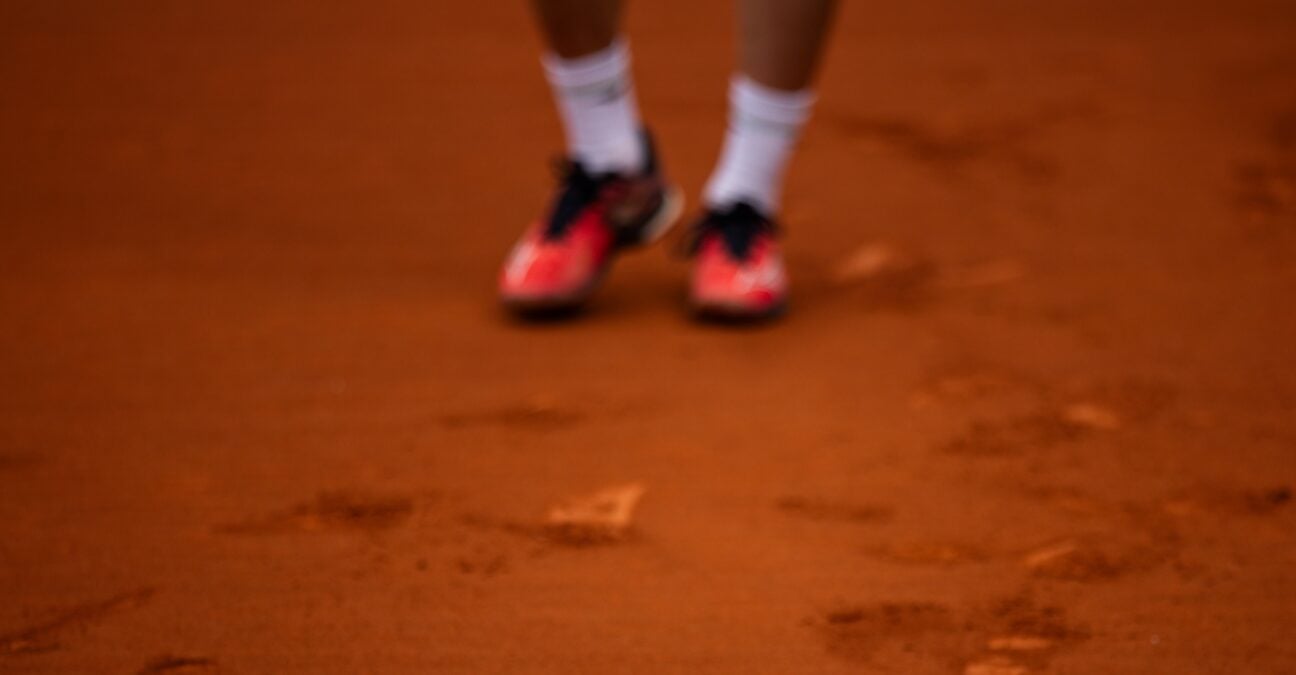How weather and court conditions impact tennis betting
Margins can be very thin when it comes to online sports betting
 Clay court detail during their match of day one of the Barcelona Open Banc Sabadell at Real Club De Tenis Barcelona, Spain (Judit Cartiel/SPP)
Clay court detail during their match of day one of the Barcelona Open Banc Sabadell at Real Club De Tenis Barcelona, Spain (Judit Cartiel/SPP)
Many bettors underestimate the impact of court and weather conditions on players’ performance and the game outcome. Players’ skill and mental tenacity are the primary strengths that win games, but other factors can also play a role. This article looks at how bettors can analyze some of these factors for better profits.
The impact of weather conditions
Weather plays a much bigger role in sports than many people realize. The conditions can change how a match plays out and even influence the outcome. That’s why experienced bettors often pay close attention to the weather forecast before they place bets.
In the highly competitive world of online sports betting, where margins can be razor-thin, having access to accurate odds and in-depth information is crucial. Leading platforms in the betting and casino industry often integrate real-time data, including weather analytics, to help players make informed decisions. If you’re looking for reputable platforms, you can find a complete list of top betting sites for both casual and seasoned bettors.
A good example is how some players perform better in cooler climates, while others struggle in windy conditions. When paired with the right sportsbook, these small details can help guide smarter and more strategic bets.
Rain
Heavy and light rainfall impact most sports events but especially tennis. A tennis match may be called off if the rain is heavy enough to cause even a mild storm or decrease visibility. Lighter rains can also slow down players and may cause them to fatigue faster. Rain can also affect tennis equipment, especially natural gut strings and rackets, which Roger Federer and Serena Williams loved.
Wind
Winds under 5 mph are typically okay for players, while anything over 15 mph makes most players
uncomfortable and can influence outcomes. Surprises tend to happen under these conditions, so bettors can favor underdogs when they see these signs.
Most matches will be postponed if wind speeds exceed 20 mph because it could give unfair advantages or force errors from players. High winds are also known to fatigue players faster as it forces them to expend more energy.
Humidity
Sometimes, you watch a tennis match on a hot and stuffy day and notice that the ball seems slower and ‘heavier’ when struck. This high humidity makes it harder for players to generate topspin and forces them to spend more energy scoring hits. Players also sweat more in humid weather, which can lead to dehydration.
Temperature
Matches played in normal temperatures feel smooth, but lower or higher temperatures than most people are comfortable with can make it more difficult to play and enjoy a tennis match. Higher temperatures make balls travel faster due to more collisions between air molecules. This could mean faster fatigue for players as it makes it difficult to hit a sweet overhead or backhand.
Altitude and timing
Many people who have taken a physics class know that air gets less dense as altitudes increase. This
means that balls travel faster and bounce higher because the air gets thinner at higher altitudes. This
could work out in different ways, including unpredictable directions and miscalculations.
While the server can take advantage of thinner air, the receiver often holds the first risk. This is why
athletes train with breathing apparatus to prepare for games at higher altitudes than they are used to.
Timing is also an important factor which affects players’ physiology and ball behavior.
The impact of court conditions
You’ve heard titles like “The King of Clay” and “The King of Grass” used for players such as Rafael Nadal and Roger Federer who excel and are nearly unbeatable in certain court conditions. Players train under varying conditions to hone their skills and accommodate common issues unique to each court type. For example, hard courts are consistent, easy to maintain and durable, making them the
most commonly used for practice and matches.
Clay courts offer the highest bounce but a much slower pace than the others, giving players time to
respond, but they also demand greater endurance. Players who excel at volley generally find clay courts better. For example, Iga Swiatek feels clay is great for creativity in tactics and gameplay.
How weather and court conditions affect tennis betting
Weather and court conditions affect tennis betting by impacting in-game events and overall results. When people place bets on tennis scores, winners, total games, set winners and tie breaks, they expect the events to happen based on a combination of players’ skills, court conditions and the weather.
The slightest changes to any of those factors could force errors, give unfair advantage or reduce one
player’s efficiency without significantly affecting the other’s. Injuries that affect performance may also
occur, as research suggests that hard courts pose injury risks to players, especially to their lower limbs.
Extreme temperatures, such as freezing cold or excess sweat, may cause players issues with their grip
and focus. Such slight margins may be the difference between a winning or a losing bet.
One often overlooked effect of weather conditions is how the spectators feel and respond to games. A cheering crowd can help players find some strength to finish off a game or even chase down an opponent and overturn the score.
Positive and negative words and behaviors impact players’ emotional, psychological, and sometimes
physical state, which can ultimately impact their match results. This is why tennis is considered one of the most unpredictable sports in the betting markets.
How to use weather and court data for tennis betting
An effective betting strategy is to find data on players’ stats, weather and court conditions before making picks.
Stay updated with weather forecasts
Weather forecasts are highly accurate for a seven-day period, which is excellent for tennis bettors monitoring the weather. Check forecasts for the period and keep updated to avoid last-minute surprises.
Many people prefer to leave their bets until a few hours before the match to confirm that the weather
conditions are stable.
Research players’ performance in specific conditions
Although there are no certainties, players who have a history of winning on specific courts or playing in certain weather may have better chances of winning under similar conditions. Players’ performance history can help bettors make likely picks.
Hedge bets if possible
Sportsbooks usually offer different odds for the same events, which allows you to hedge tennis bets using two or more platforms. Compare odds and calculate potential winnings to find the right figures.










